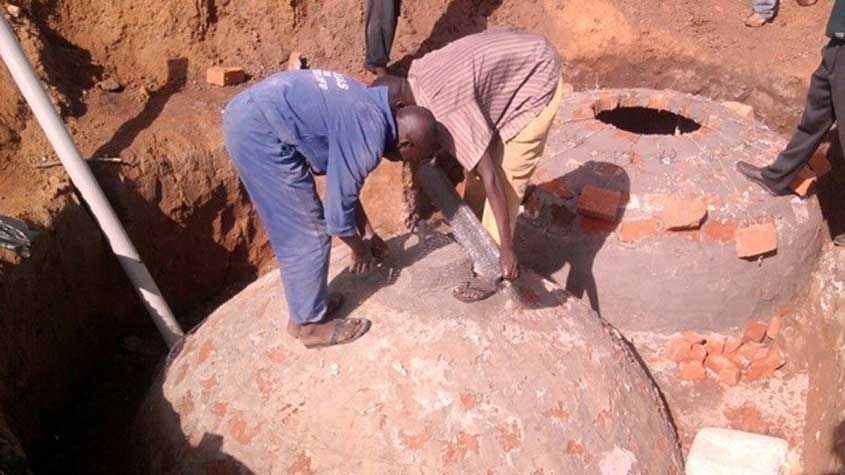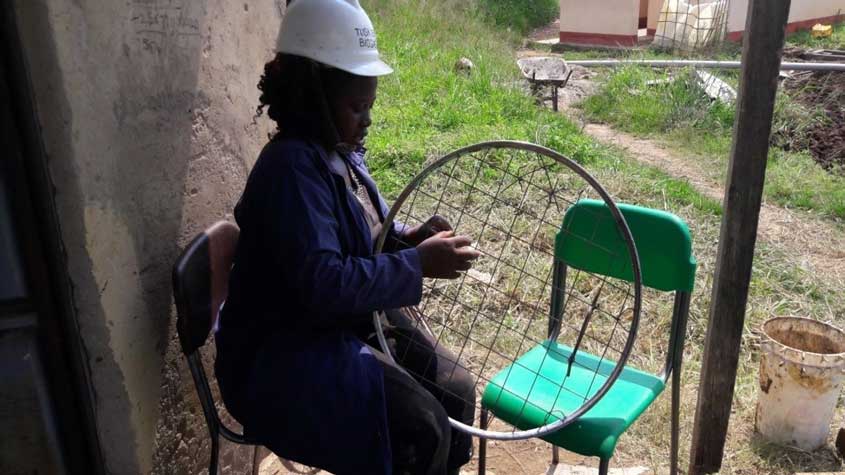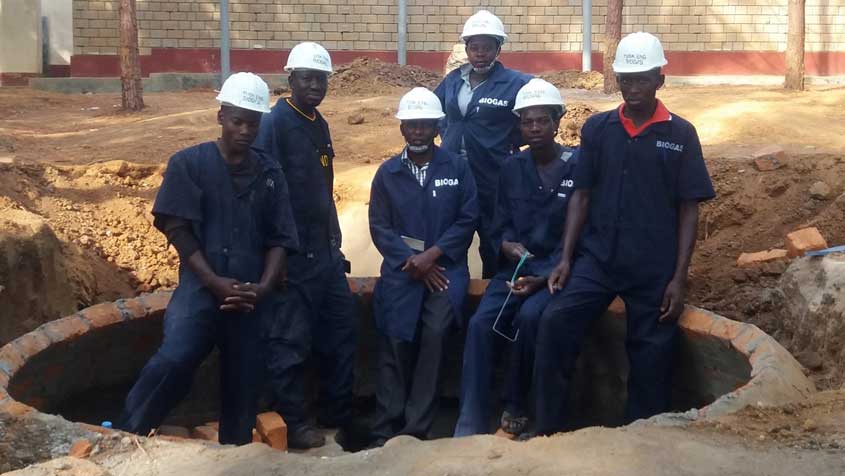Soil degradation, inadequate sanitation and lack of access to clean energy are important challenges facing African farmers and those living in rural areas.
According to the Bill and Melinda Gates Foundation, 40 percent of the world’s population lacks access to adequate sanitation facilities, which contributes to around 700,000 children dying from diarrhea each year. At the same time, the use of solid fuels such as wood, crop waste, charcoal and coal for cooking and heating, contributes to high levels of household air pollution causing 4.3 million premature deaths every year according to the World Health Organization (WHO).

Recognizing the interrelationship between soil degradation, inadequate sanitation and clean energy, Rachael Nabunya Kisakye, project engineer at the Ugandan company Tusk Engineers, has developed a bio-latrine.
“The bio-latrine concept was inspired by the heavy burden borne by African women to bring food to the table when in fact they have a source of energy that is readily available but largely unexploited. The solution is the bio-latrine,” Ms. Nabunya says.
The concept
“A bio-latrine is an environmentally friendly toilet that is connected to a biogas digester that converts human excrement into a quality fertilizer that is safe to handle and can be used for agriculture. In the same process, combustible gas (biogas) is also produced and can be used for cooking, heating and lighting. This complete system addresses energy, sanitation, environment and agricultural production in a single cycle, and we are very proud of that,” Ms. Nabunya explains.
Tusk Engineers’ bio-latrine improves hygiene, community sanitation, living standards and the environment in general, through better waste management and the production of high-quality fertilizer and biogas. It is made from a combination of off-the-shelf products, including biogas digesters from India and China, as well as biogas lamps, pressure gauges and stoves from China.
A bio-latrine is an environmentally friendly toilet that is connected to a biogas digester that converts human excrement into a quality fertilizer that is safe to handle and can be used for agriculture.
Rachael Nabunya Kisakye
Since the launch of its 2016 model, Tusk Engineers has introduced a number of new enhancements for improved performance. These include mechanical mixers, improved slope of the feed pipe to the digesters, three-chamber sediment tank and SATO pans with shutters to eliminate odors.
Biogas output
With a 45-cubic meter bio-digester, Tusk Engineers’ biodigester can generate 15 cubic meters of biogas in 24 hours. The biogas stoves commonly used by families consume just 0.15 cubic meters of biogas per hour, meaning that one 45 cubic meter bio-latrine can provide biogas to over 20 families. The company is now working to ensure its technology is widely adopted and used in Uganda and beyond.

Green innovation … addresses pollution caused by outdated and polluting methods of cooking and poor sanitation resulting from suboptimal disposal of human waste. In sum, it helps us build a green future.
Rachael Nabunya Kisakye
The role of intellectual property
“We are in touch with the Uganda Registration Services Bureau (Uganda’s national IP office) and are in the process of protecting our innovation with an Intellectual Property Certificate. This is important because it prevents others from copying our work. It also gives us the possibility of licensing out our technology to others and thereby creating an additional revenue stream for the company,” explains Ms. Nabunya. “It will also serve as collateral and enable us to secure funding from financial institutions to further develop and deploy our system,” she adds.

Innovation and innovative thinking
“Innovation is about utilization of the available resources – technologies, manpower and machines – to address our immediate challenges. It is not only about being new; it is also about having the capacity to address local challenges and making this world a better place to live in,” Ms. Nabunya notes.
Green innovation is important because it helps address challenges that lead to global warming. It also addresses pollution caused by outdated and polluting methods of cooking and poor sanitation resulting from suboptimal disposal of human waste. In sum, it helps us build a green future.
Aspirations to go nationwide
The company is currently testing its technology within communities and has built and connected bio-latrines to more than 150 domestic biogas digesters and 40 institutional digesters ranging in size from 6 to 70 cubic meters of fixed dome design.
“Our aim is to reach all of Uganda’s rural population,” says Ms. Nabunya.